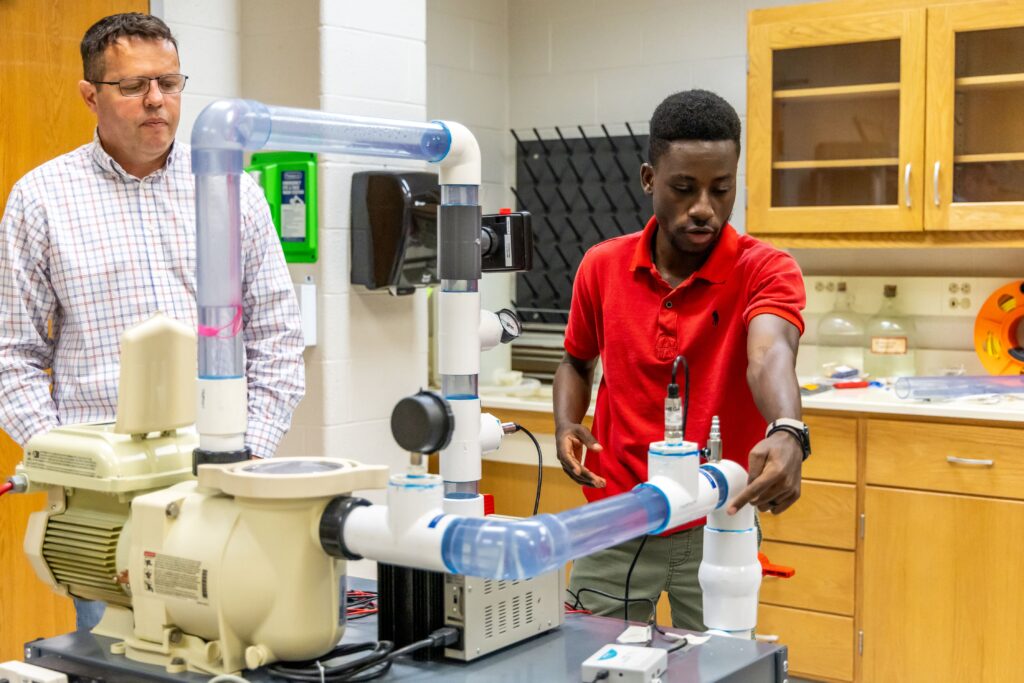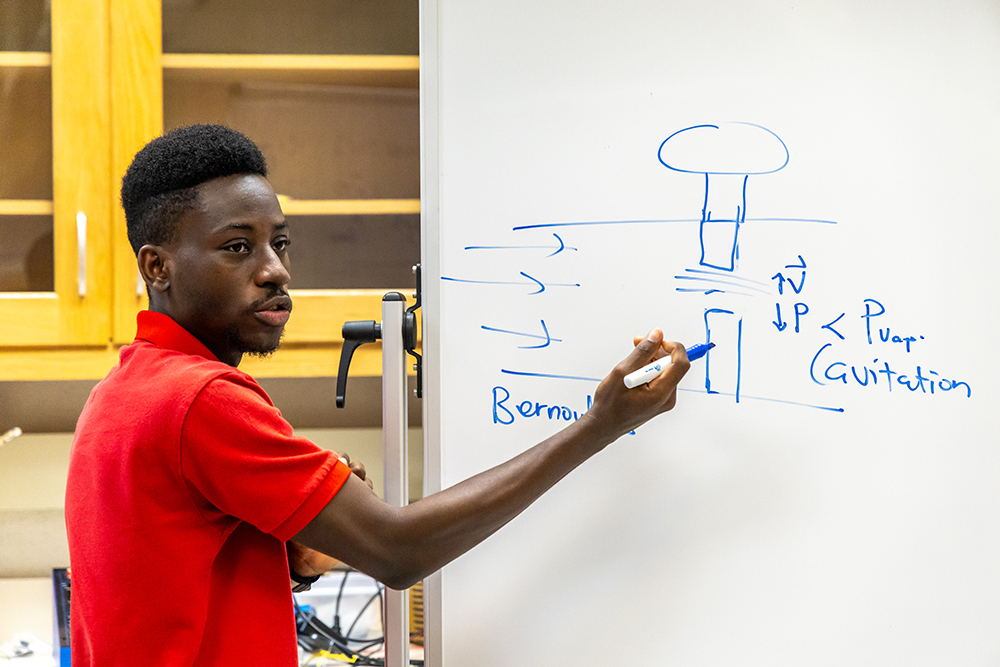Engineering major Isaac Plange ’27 hopes to be an aerospace engineer one day. Specifically, he says, he’d like to design space shuttles. To prepare for this future career, Plange is spending the summer working with Dr. Derli Amaral, Assistant Professor of Engineering, on a research project entitled “Pump Suction Data Measurement and Turbulence.”
“One challenge that has been identified as the nemesis of efficient and smooth transit of vehicles through fluid is turbulence,” Plange wrote in his application for funding from the Martin Science Research Institute, which provides support for teams of BC faculty and students to conduct summer research projects in the natural sciences. “The measurement of turbulence has baffled scientists for decades and most studies have not been successful in producing a consistent way to measure turbulence in fluid flow.”
Anyone who has traveled by plane has likely experienced turbulence, felt as the bumps and jerks that can occur when a plane hits a patch of strong winds or differences in air temperature. Turbulence can cause problems for space shuttles upon re-entry to the earth’s atmosphere. But turbulence also occurs in another fluid – water – which is easier to work with in a laboratory setting and the focus of Plange’s summer research.
For seven weeks this summer, Plange is studying the characteristics of turbulent flow in water. His project is a modification of a classic experiment in fluid mechanics, the field of physics concerned with how fluids respond to outside forces. Using equipment in the Department of Engineering and Physics’ new Mechatronics Lab, Plange is measuring water pressure flowing through pipes and then using mathematical computing software to calculate the important frequencies present in the data collected.

Plange, a rising sophomore from Takoradi, Ghana, says that his research will help him better understand how fluids generally behave, which will, in turn, help him be a better engineer.
The final product of his Martin project will be a research paper detailing his findings, which Plange hopes to present at an academic conference. But the research he is conducting could also have broader applications. For example, the differences in pressure and temperature in water that is pumped through city pipes can result in cavitation, the formation and collapse of tiny, pressurized bubbles which, if not mitigated, can cause excessive wear and tear on pumping equipment. Understanding how turbulent water molecules move could be used to figure out ways to build better pumps or more effectively manage water flow in a municipal system.
Amaral says that whatever the results of his Martin project, Plange is gaining valuable experience in doing hands-on research and problem solving, important skills for any engineer. Plange agrees.
“We want to solve problems,” he says. “We are engineers. That’s what we do.”
– Heather S. Cole


